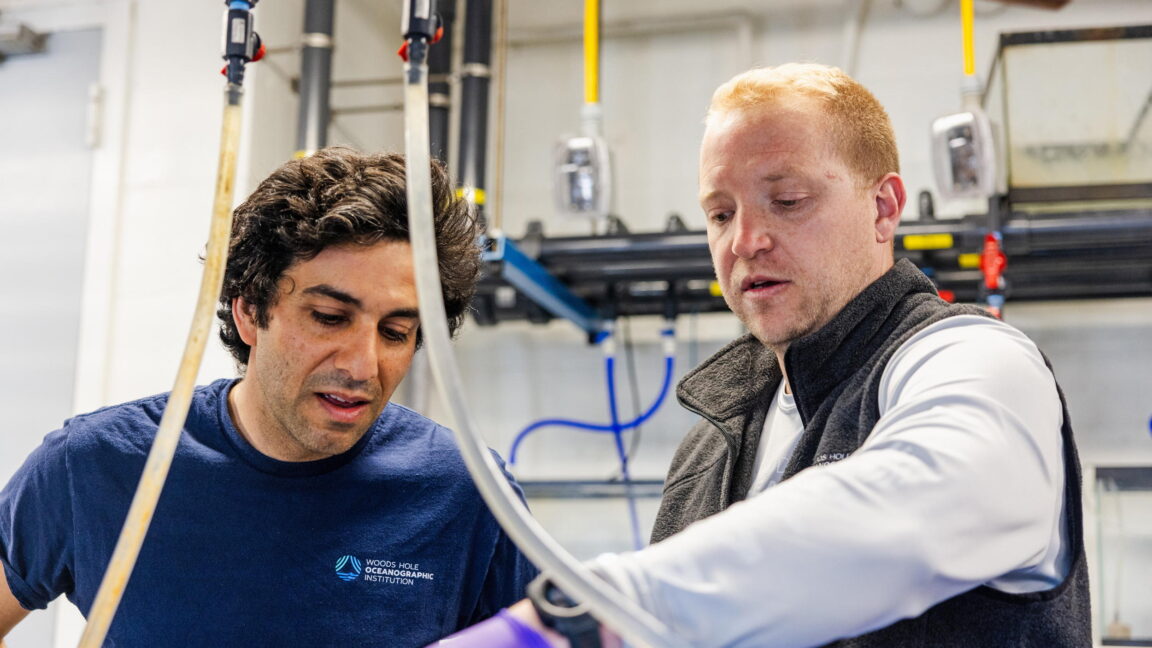This month, the team plans to release 50 tons of sodium hydroxide into a designated area of the Wilkinson Basin from the back of one of two research vessels participating in the LOC-NESS operation.
The basin is an ideal test site, according to Subhas, because there is little presence of phytoplankton, zooplankton, commercial fish larvae, and endangered species, including some whales, during this season. Still, as a precautionary measure, Woods Hole has contracted a protected species observer to keep a look out for marine species and mitigate potential harm if they are spotted. That person will be on board as the vessel travels to and from the field trial site, including while the team releases the sodium hydroxide into the ocean.
The alkaline substance will be dispersed over four to 12 hours off the back of one of the research vessels, along with the nontoxic fluorescent red water tracer dye called rhodamine. The dye will help track the location and spread of the sodium hydroxide once released into the ocean, and the vessel’s wake will help mix the solution in with the ocean water.
After about an hour, Subhas said, it will form into a “pinkish” patch of water that can be picked up on satellites. “We’re going to be taking pictures from space and looking at how this patch sort of evolves, dilutes, and stretches and disperses over time.”
For a week after that, scientists aboard the vessels will take rotating shifts to collect data around the clock. They will deploy drones and analyze over 20 types of samples from the research vessel to monitor how the surrounding waters and marine life respond to the experiment. They’ll track changes in ocean chemistry, nutrient levels, plankton populations and water clarity, while also measuring acidity and dissolved CO2.
In March, the team did a large-scale dry run of the dispersal at an open air testing facility on a naval base in New Jersey. According to Subhas, the trial demonstrated their ability to safely and effectively deliver alkalinity to surface seawater.
“The next step is being able to measure the carbon uptake from seawater—from the atmosphere into seawater,” he said. That is a slower process. He said he expects to have some preliminary results on carbon uptake, as well as environmental impacts, early next year.
This story originally appeared on Inside Climate News.

